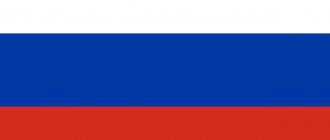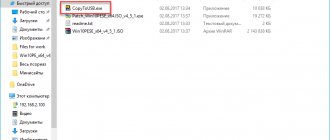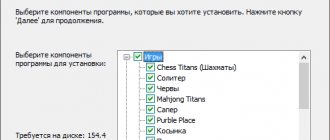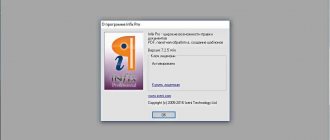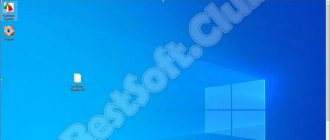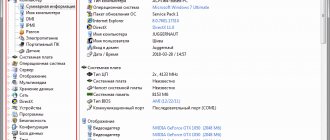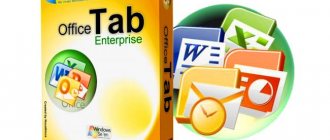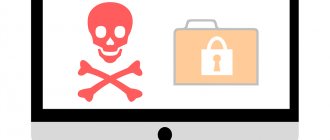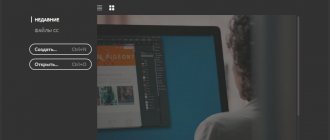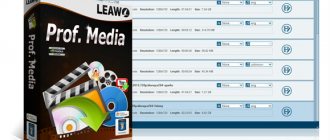Windows 8 64 bit Original image download torrent
Nowadays, there are quite a number of different operating systems that work reliably both for assembling a personal PC and when creating servers. Windows is considered the most convenient operating system nowadays. Of all the versions of Windows, the most interesting will be Windows 8 64 bit, the torrent of which you can download on our website absolutely free.
This boot collection contains many programs that are associated with Windows 8, as well as the system itself with system files and drivers, without which the system will not work, or will work, but incorrectly. The entire boot collection will be based on the disk image of the Russian version of the system, so it will be very easy to work on this system. The boot pack itself has been tested for functionality, and we can say with confidence that the system is fully functional. The program also has a special language package that makes it possible to load not only Russian, but also English interface. The system is easily installed via USB. All you need is a computer with an Intel or AMD processor with at least 1 GB of RAM for the most stable operation of all components. If you liked this system and want to install it on your PC, then you can download Windows 8 64 bit via torrent to your computer for free directly from our website.
The system installer has not received any changes in terms of activation, so the system will be checked for activation like all other versions, so as not to violate the law or the internal rights of the system. In fact, this is a regular version of Windows 8, which was made in an ISO image. But this will hide some updates that search for the authenticity of the operating system. The update for this purpose has the following symbolic code: KB971033. In addition, three other updates that were intended for the transition to Windows 10 were also canceled: KB3021917, KB2952664, and KB3150513.
The most important point when choosing the bit depth of the operating system is that it is most convenient to install a 64-bit one, because it can run programs and games, as well as other applications from both 16-bit and 32-bit systems. Thus, a system such as 64-bit will be universal.
On this page, using the button below, you can download Windows 8 64 bit Original image via torrent for free.
Windows 8.1 Preview: first look
Less than a year after the release of Windows 8, Microsoft introduced a fully functional preview version of Windows 8.1. This is quite unusual, as Windows 8.1 is more than the well-known service packs that usually bring bug fixes (and rarely feature changes). In this case, it is correct to talk specifically about a full OS update, in the sense in which it, say, happens with mobile platforms. In particular, Windows 8 users will receive Windows 8.1 for free. Steve Ballmer called this approach “rapid releases,” although he did not specify how quickly they would appear. Likewise, it is unclear whether we will see Windows 8.2 or the next version will be 9.0. Therefore, let's not guess, but get acquainted with the innovations of Windows 8.1 Preview.
Installation
Windows 8.1 Preview is available as both an update and a full bootable disc. For Windows 8 users, the first option should be more convenient, however, Microsoft warns that it is impossible to subsequently update Windows 8.1 Preview before the final release (i.e., with the preservation of third-party software), it is also impossible to uninstall it, so it is unlikely that experiments should be carried out on work PCs.
The minimum system requirements for Windows 8.1 Preview are as follows:
- CPU 1 GHz;
- RAM 1 GB (for 32-bit system) or 2 GB (for 64-bit system);
- disk space of 16 GB (for a 32-bit system) or 20 GB (for a 64-bit system);
- graphics adapter supporting Microsoft DirectX 9 and WDDM driver.
In theory, Windows 8.1 Preview should work successfully in the same place as Windows 8, and therefore Windows 7. Of course, every rule has its exceptions. For example, the official Microsoft blog states that tablets and PCs with new 32-bit Atom processors need to first update their graphics drivers.
Installing Windows 8.1 Preview from a boot disk generally repeats the procedure for Windows 8 with minimal differences. At the very beginning we are greeted by a slightly modified betta fish, which has already become a symbol of preliminary versions of Windows:
The list of parameters that can be adjusted at the initial stage has also expanded somewhat - in particular, pay attention to the pre-loading of predicted pages, which appeared in Internet Explorer 11:
At the very end, you can immediately connect SkyDrive, since the desktop client of this service (with synchronization and other things) is integrated into Windows 8.1 Preview:
Metro
The main changes in Windows 8.1 Preview predictably affected the new Metro interface. Microsoft made a few nods to those who advocated for a stricter separation of Metro and Desktop, but very little. Its policy is to primarily support touch control and mobility, and in this context everything is quite logical. Users of desktop PCs and non-touch laptops will still be forced to put up with the dualism of the OS or stay with Windows 7, which Microsoft, in general, does not condemn.
But touchscreen users will undoubtedly find Metro's changes useful. At first glance, the Windows 8.1 Preview start screen is not much different from Windows 8:
The only thing that attracts attention is the new standard sizes of the tiles - four times larger or smaller than the previous square ones.
Contrary to what was done in earlier builds, single tiles can be dragged directly from the start screen. However, there is a special mode for setting it up, where you can drag groups of tiles, give them names, etc.
At the bottom of the Start screen there is a down arrow button that, in Windows Phone style, leads to a full list of installed applications. To do this, click on it with the mouse or scroll from bottom to top:
The list can be sorted by several criteria. More interestingly, the newly installed application is placed only here; it needs to be specially pinned on the start screen:
In the settings (right pop-up panel of the “wonder buttons”), a personalization section has appeared, where you can change the color scheme and wallpaper of the start screen - previously, this was done by switching to the desktop:
To be fair, it should be noted that there are many similar examples of additional isolation of Metro and Desktop from each other, i.e. you will have to switch back and forth less often, which may help many users come to terms with the dualism of the OS interface.
Metro: PC Settings
The settings in the Metro analogue of the Control Panel have been significantly expanded. They are now grouped into 9 main categories and 42 subcategories:
In a word, it is clear that there are many more of them, so describing every single one is a thankless task. However, what is most valuable is not their quantity, but the fact that in the most common scenarios the user will not have to leave Metro, which can be simply inconvenient, for example, when working with a tablet in weight. So, now you can adjust the screen resolution directly in Metro,
select language,
assign default main programs,
configure File History,
specify a proxy server,
select SkyDrive as the main location to save files,
And so on.
Snap
The capabilities of multitasking and simultaneous display of Metro applications have been significantly expanded, although in Windows 8.1 Preview they turned out to be more modest than in previous builds. Firstly, Snap now works starting at a screen width of 1024 pixels. In this case, two applications split the screen in half - no options. Secondly, for higher resolutions the screen can be divided in almost arbitrary proportions by simply dragging the border to the desired position. There is, however, a certain “forbidden” zone near the middle of the screen (that is, you cannot make the size of the application just a little less or more than half), as well as a restriction on the minimum size, depending on the screen resolution. Thirdly, on large screens you can simultaneously place up to four applications - for example, 1680 horizontal pixels allow three:
Naturally, as in the original Windows 8, the convenience of working with “shrunk” applications greatly depends on how correctly and intelligently they react to this situation. For example, in the Metro version of Internet Explorer 11, it became possible to display several tab pages in parallel:
But some sites change their layout in such conditions, while others are simply scaled to an almost unreadable form:
Meanwhile, correct handling of different screen resolutions is needed not only in Windows 8, but also on mobile devices, so the situation will gradually improve.
Search
In Windows 8.1 Preview, search is essentially an integration of Windows Search and Bing. Unlike Windows 8, upon request, all possible information is immediately obtained from all available places. Thus, to search, say, only local documents, the option must be selected separately:
The search results are presented as an “endless” horizontal strip with a fairly convenient grouping. Since search tools are present in most standard Metro applications, the latter may appear in the results as corresponding icons - clicking on them opens the application immediately with information relevant to the query. For example, the Store, upon request for “Pink Floyd,” returned several applets, starting with an informer about the activities of the legendary group.
Some observers are excited about the new search, although it certainly doesn't do anything miraculous. Except that in some cases it can reduce the number of movements with a mouse or finger. If desired, integration with Bing can be disabled:
Shop
The application store applet has also been redesigned. Its Start screen may seem to offer less information than Windows 8's, but it appears to be deliberately focused on the most popular apps:
And nothing prevents you from quickly moving to selecting the desired category (right mouse button or scrolling from behind the screen):
Program descriptions have become much more detailed, with horizontal scrolling (like in Weather):
Applications
Strictly speaking, application programs have nothing to do with the OS, but in Windows 8/8.1, among other things, they are intended to serve as an example for third-party developers. Almost all the old Metro applications have been improved in one way or another - for example, some image editing tools and even artistic effects have been added to Photos. Several new ones have also appeared.
Alarm
. It is also a timer and stopwatch:
Cooking
: not only a selection of recipes and tips (unfortunately, the content is in English), but also a personal planner for shopping and kitchen chores in general:
Health and fitness
: everything about training, healthy eating, diseases, tools for monitoring your own achievements and condition, visual aids (also all in English):
Reading list
: A sort of "micro-OneNote".
Able to accumulate links to materials from other applications through the system Share
:
You can return to reading at any convenient time, and the application corresponding to the bookmark automatically opens in Snap mode:
Desktop
Contrary to what one might expect, the “old-school” user interface has also received some changes. The first thing you'll notice is that the Start button is back, but it simply replaces the previous Start screen thumbnail and switches to it:
Of course, there is no great sense in such a solution, since the main complaints were related to the lack of the button itself, but the Start menu - which allowed you to work in one context and not switch to Metro to launch new applications. Nevertheless, there is some benefit: in a virtual machine, for example, it is more convenient to aim at a visible button than at an invisible (pop-up) thumbnail.
Something even more interesting is present in the taskbar settings, specifically on the Navigation tab:
As you can see, here you can disable hot corners, make the background on the desktop and start screen the same, activate downloading directly to the desktop, etc.
By right-clicking on the Start button, the well-known system menu appears, in which something has also changed. In particular, PC shutdown options have been added:
Please note that by default the command line is replaced by the PowerShell console (changed in the taskbar settings) - probably to emphasize that the entire menu (and with it the Desktop) is intended rather for professionals.
The first illustration in this section also shows Explorer. It is noteworthy that in Windows 8.1 Preview, libraries are not displayed by default. But fortunately, they haven’t gone anywhere - just look in the View menu and look at the Navigation Area submenu.
Internet Explorer 11
Windows 8.1 Preview includes a new version of the Microsoft browser, which was already mentioned a couple of times during the review. In particular, the Metro version has been slightly changed in appearance (tabs at the bottom, not at the top), and has also learned to display several tabs at the same time.
But the desktop version really surprised me. For example, rumors about support for WebGL in it have been circulating for quite a long time, but somehow they were too dissonant with previous official statements by Microsoft representatives about the unsafety of this solution (such as the fact that in the case of hardware acceleration of WebGL, the browser actually interacts directly with the driver, which can be leaky, etc., while DirectX provides an additional layer). And yet, it's true:
It’s difficult to say about any more realistic examples, since in a virtual machine IE11 works without hardware acceleration (although it is generally supported). Some even complained about the lack of WebGL support, but this is apparently some kind of outdated one. The official WebGL Conformance Test (Kronos Group) gives the following results for IE11: 14799 of 20574 passed, 12 timed out
And for Chrome 27 - these are: 5242 of 6345 passed, 70 timed out
Results vary widely, likely because Chrome handles WebGL engine hangs differently and issues warnings accordingly. But in any case, it is clear that Microsoft has made a considerable groundwork.
It is noteworthy that when introducing Windows 8.1 Preview from the Build conference stage, Antoine Leblond, vice president of Microsoft, spoke of a desire to maintain standards, although the W3C is in no hurry to consider WebGL. However, in Windows 8.1 Preview, WebGL is available not only in web, but, as LeBlond said, in native applications as well. It's not very clear what exactly he meant, since Metro was demonstrated - perhaps WebGL is supported at the WinRT level.
However, the surprises didn't end with WebGL. The following was found in the IE11 settings:
The SPDY protocol, created by Google to speed up the loading of web pages, has received widespread support in “alternative” browsers, but is also very far from formal standardization, although it is listed in IETF drafts. Perhaps this nod was made by Microsoft in response to the settlement of some other issues with Google, but it is possible that it was simply under the pressure of competition - Google was the first to support SPDY in its servers and is promoting Chrome as the optimal client for its own services.
Also in IE11, proactive loading of the following pages via links from the current one appeared. Similar features are available in other browsers and are offered in various plugins. It should be borne in mind that while their effectiveness is not obvious, they contribute to traffic growth, so on chargeable connections they should probably be turned off.
In the depths
This is the first quick review, and, naturally, it cannot cover all the innovations, especially since many are hidden from the user’s eyes. For example, at the Build conference, where Windows 8.1 Preview was presented, 3D printing was demonstrated - the point is that Windows 8.1 will have a built-in infrastructure to support such equipment, and, accordingly, it will be much easier for its manufacturers to develop drivers.
In the field of printing, by the way, Windows 8.1 Preview demonstrates quite a lot of interesting new products. Thus, you can print directly to printers that support Wi-Fi Direct even without installing drivers. A special NFC tag on any printer will allow you to automatically connect it to a laptop or tablet with an appropriate reader.
System administrators will certainly like the Workplace Join feature, which will allow you to manage the rights of an authenticated user depending on whether he connected from an already registered device or a new one. Work Folders will allow a mobile employee to always have his work files with him, which will be automatically synchronized with the relevant corporate resources, including via the Internet or using Workplace Join.
In Windows 8.1 Preview, built-in support for 3G/4G modems has been significantly expanded, and a laptop equipped with them will be able to play the role of a wireless access point, similar to how modern smartphones do.
Windows 8.1 Preview attempts to address the issue of UI scaling on displays with different PPIs. A standard scale of 200% has appeared, and automatic window scaling is supported when moving between displays.
This is, of course, not a complete list, and it will probably be adjusted for the release.
Summary
Thus, Windows 8.1 will undoubtedly be a rather useful (especially since it is free) update to Windows 8. It will not, of course, remove the main issue with this OS - the feasibility of interface dualism. It's impossible to imagine what Metro would be of interest to a desktop user. Another thing is modern hybrid devices that can be used alternately as a tablet and as a laptop. Microsoft has put a lot of effort into making the transition from one mode to another as seamless as possible for this scenario. The two interfaces are not completely separate, but they are much more independent than in the original Windows 8. Mouse operation is somewhat more convenient, and touch functions have been significantly improved. As a result, the popularity of Windows 8.1 on suitable devices, which were demonstrated at Build 2013 in all price categories, is likely to grow.
